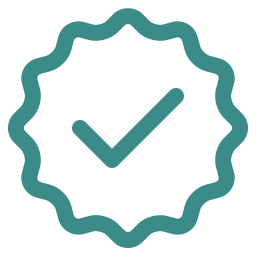Unlocking the Power Within And Delving into the Core Principles of Pilates for Building Strength, Stability, and Mind-Body Connection
Pilates is a form of exercise that has gained immense popularity in recent years.
It is known for its focus on building core strength, flexibility, and balance.
At the heart of Pilates are six core principles that serve as the foundation for every movement: breathing techniques, concentration, control, centering, precision, and flow.
In this article, we will explore each of these principles in detail and discuss how they contribute to building a strong foundation for your Pilates practice.
Whether you are new to Pilates or have been practicing for years, understanding these core principles can help take your practice to the next level and maximize its benefits for your overall health and well-being.
So let's dive in and discover the keys to building a solid foundation through Pilates!
Breathing Techniques in Pilates
You can't do Pilates without mastering the breathing techniques - it's what makes the movements so powerful and transformative for your mind and body.
The principles of Pilates emphasize proper breathing while exercising on your home Pilates Reformer.
It is important to understand that Pilates isn't just about physical movement; it also incorporates breathing to help you focus on the present moment.
Breathing in Pilates involves inhaling deeply through the nose, expanding the ribcage, and exhaling forcefully through pursed lips while engaging your abdominal muscles.
This technique helps to activate your deep core muscles, which provide stability and support while exercising on your Lagree Megaformer.
By practicing this type of breathing regularly, you'll be able to improve your lung capacity and endurance.
Incorporating proper breathing techniques in Pilates will not only enhance your performance but also help you attain a sense of relaxation and increased focus throughout each session.
As we move into discussing concentration in Pilates, remember that mastering proper breath work lays the foundation for all other principles of this practice.
The Importance of Concentration in Pilates
Wow, isn't it amazing how little you have to focus during Pilates?
I mean, who needs concentration when you can just half-heartedly go through the motions and hope for results?
Actually, the principles of Pilates dictate that concentration is one of the fundamental aspects of this exercise.
Without it, we can't expect to see real progress or change in our practice.
Concentration is essential because it allows us to connect our minds with our bodies.
We need to be fully present and focused on each movement in order to execute them correctly.
This means paying attention not just to what we're doing but also how we're doing it.
Concentration helps us develop a deeper understanding of the fundamentals of Pilates and how they apply to our individual bodies.
Incorporating concentration into your Align Pilates F3 practice may take some time and effort, but it's worth it.
By developing this skill, you'll be able to approach your workouts with a greater sense of mindfulness and intentionality.
In turn, this will help you better understand your own body and its capabilities.
Next up: developing control in your Pilates practice!
Developing Control in Your Pilates Practice
As you progress in your Pilates journey, it's important to focus on developing control in your movements to see the full benefits of this exercise.
Control is one of the fundamental principles of Pilates that, when mastered, improves coordination and reduces the risk of injury when exercising on your Align Pilates H1 Reformer.
To develop control in your Pilates practice, consider incorporating these tips:
-
Breathe intentionally
One way to improve control of your movements is by focusing on your breath.
Inhale deeply as you prepare for a movement and exhale slowly as you execute it.
This helps engage core muscles and maintain stability throughout each exercise.
-
Start slow
Rushing through exercises can compromise proper form and hinder progress.
Instead, take time to master each movement at a slower pace before increasing the intensity or adding variations.
-
Pay attention to alignment
Proper alignment is key to building strength and avoiding injuries.
When performing an exercise, make sure you are maintaining good posture and engaging the correct muscles.
By applying these principles of Pilates, you can develop greater control over your movements and experience improved overall physical fitness.
Next up, we'll explore another essential aspect of this practice - understanding the concept of centering in Pilates.
Understanding the Concept of Centering in Pilates
Centering is a fundamental principle of Pilates and involves finding balance and stability in your practice.
It refers to engaging the muscles of your core, or what Joseph Pilates called the 'powerhouse,' to support your movements.
By centering yourself, you can move with more control and efficiency.
To achieve centering in Pilates, it's important to focus on breathing and alignment.
Proper breathing helps you connect with your core muscles, while good alignment ensures that you're using them effectively.
As you inhale, expand your ribcage and feel the breath fill up your lungs. On the exhale, draw your navel towards your spine and engage your deep abdominal muscles. This practice is good to perform on a Pilates chair.
By focusing on these principles of Pilates, including centering and proper breathing techniques, we can improve our overall physical fitness as well as our mental clarity.
In addition to building strength and flexibility throughout our bodies, we can also develop greater self-awareness by honing in on every movement we make during our practice.
Precision is another essential component of Pilates that builds upon the foundation established by centering.
Every movement counts when it comes to achieving optimal results from each exercise.
We'll explore this concept further in the next section about precision in Pilates: why every movement counts and how it can lead to improved body awareness, control, and overall physical performance.
Precision in Pilates: Why Every Movement Counts
To achieve the best results from every Pilates exercise, you need to pay attention to even the smallest movement, allowing your muscles to engage and control your body like a precision instrument.
Precision in Pilates is one of the core principles of this practice that creates a strong foundation for improving overall health when practicing Pilates on your Align C8 Reformer.
Here are four reasons why precision matters in Pilates:
- Precision ensures proper alignment
Every movement in Pilates requires precise alignment of different parts of your body.
When you perform an exercise with precision, it helps you maintain good posture and prevents injury.
2. Precision activates specific musclesIn Pilates, each exercise targets specific muscle groups that work together to improve strength and flexibility.
When you execute movements with precision, it activates these muscles effectively and efficiently.
3. Precision enhances the mind-body connectionThe principles of Pilates emphasize the connection between mind and body.
By paying close attention to each movement with precision, you cultivate this connection and develop greater awareness of your body's capabilities.
4. Precision leads to better resultsUltimately, performing each movement with precision leads to better results in terms of strength, flexibility, balance, and overall health.
Precision is just one aspect of the core principles of Pilates that contribute to its effectiveness as a form of exercise.
The next section will explore another key principle - the fluidity of flow in Pilates - which works hand-in-hand with precision for optimal results.
The Fluidity of Flow in Pilates
Experience the graceful movements and seamless transitions between exercises that characterize Pilates, enabling you to flow through your practice with ease.
This is the result of one of the fundamental principles of Pilates: the fluidity of flow.
The concept refers to the smooth and continuous movement from one exercise to another, without stopping or losing control.
When practicing Pilates on an Aeropilates machine, it's essential to focus on maintaining a steady rhythm throughout each movement.
By doing this, we engage our muscles in a way that enhances our physical awareness and coordination.
Additionally, fluidity of flow helps us maintain a sense of calm and relaxation while still challenging our bodies.
The principles of Pilates emphasize precision and control in every movement we make.
However, by incorporating fluidity into our practice, we can enhance these aspects even further.
Moving smoothly between exercises allows us to explore new ranges of motion while still maintaining proper alignment and technique.
It's important to remember that this doesn't mean rushing through each exercise but rather moving with intention and purpose.
By experiencing the gracefulness that comes with fluidity in Pilates, we can adapt the core principles to our individual fitness levels for greater results in strength, flexibility, balance, and overall well-being.
Pilates for All: Adapting the Core Principles to Your Fitness Level
You can easily adapt Pilates to your fitness level and feel confident in your abilities.
This is because the core principles of Pilates are designed to be adaptable for all levels of fitness.
Whether you are a beginner or an advanced practitioner, Pilates can help you build strength, improve flexibility and balance, and enhance your overall health and well-being.
The principles of Pilates include concentration, control, centering, breath, precision, and flow.
These principles are the foundation of every Pilates exercise and they can be applied to any movement or activity.
For example, if you're new to Pilates, you may need to focus more on concentration and control as you learn the exercises.
As you become more familiar with the movements, you can start to incorporate more flow into your practice.
Pilates for all means that anyone can benefit from this form of exercise regardless of their fitness level or physical ability.
Whether you have a chronic condition such as arthritis or back pain or simply want to improve your posture and flexibility, there's a Pilates class or program that can meet your needs.
With its emphasis on proper alignment and core stability, Pilates offers a safe and effective way to improve your physical health while reducing stress and promoting relaxation.
Frequently Asked Questions
What are the benefits of Pilates for individuals with injuries or physical limitations?
For those with injuries or physical limitations, Pilates can be an incredibly beneficial form of exercise.
Take, for example, Jane, who suffered a back injury and struggled to find a workout routine that didn't aggravate her pain.
Through Pilates, she was able to strengthen her core muscles without putting strain on her back.
This is because Pilates focuses on precise movements and proper alignment, allowing individuals to work within their own physical limitations while still achieving a challenging workout.
Additionally, the low-impact nature of Pilates makes it accessible to those with joint issues or other chronic conditions.
Overall, Pilates provides a safe and effective way for individuals with injuries or physical limitations to improve their strength and flexibility while also reducing pain and discomfort.
How often should one practice Pilates to see results?
To see results from Pilates, it's important to practice regularly.
Our personal experience suggests that practicing two to three times a week can lead to noticeable improvements in strength, flexibility, and overall body awareness within just a few weeks.
However, everyone's body is different, so the frequency of your Pilates practice should be based on what feels comfortable and sustainable for you.
It's also worth noting that consistency is key; even if you can only fit in one or two sessions per week, committing to those sessions over an extended period of time will likely yield better results than sporadic or infrequent practice.
Can Pilates help with weight loss?
Yes, Pilates can help with weight loss. While it may not burn as many calories as high-intensity cardio workouts, Pilates can still be an effective tool in shedding unwanted pounds.
The low-impact nature of Pilates makes it a great option for those who are looking to lose weight without putting too much strain on their joints.
Additionally, by practicing Pilates regularly and incorporating healthy eating habits, individuals can see improvements in their overall body composition and muscle tone.
However, it's important to note that sustainable weight loss requires a combination of exercise and a balanced diet, so Pilates should be viewed as just one component of a holistic approach to weight management.
Are there any age restrictions for practicing Pilates?
There aren't any age restrictions for practicing Pilates, as it's a low-impact exercise that can be modified to suit any fitness level.
However, it's important to consult with a doctor before starting any new exercise program, especially if you have any pre-existing conditions or injuries.
Additionally, it may be beneficial to work with a certified Pilates instructor who can tailor the exercises to your individual needs and abilities.
With regular practice, Pilates can help improve strength, flexibility, and balance at any age.
How does Pilates compare to other forms of exercise in terms of building strength and flexibility?
When comparing Pilates to other forms of exercise, it's important to note that while some exercises may focus on building strength or flexibility, Pilates aims to improve both simultaneously.
By utilizing a combination of controlled movements and focused breathing techniques, Pilates targets core muscles that are often overlooked in traditional workouts.
This approach not only builds strength and flexibility but also improves posture, balance, and overall body awareness.
Additionally, Pilates is low-impact and can be modified for different fitness levels making it accessible to a wide range of individuals looking to improve their physical health.
Overall, incorporating Pilates into your exercise routine can provide a unique and effective way to build both strength and flexibility while improving overall wellness.
Conclusion
In conclusion, exploring the core principles of Pilates has been an enlightening experience.
We've learned that breathing techniques, concentration, control, centering, precision, and flow are all vital components of this exercise regimen.
By understanding these principles and applying them consistently in our practice, we can build a strong foundation for our bodies and minds.
Coincidentally, building a strong foundation is also essential in other areas of our lives.
Whether it's in relationships or career goals, having a solid base to work from can make all the difference in achieving success.
Just as Pilates requires patience and dedication to master its core principles, so too do other aspects of life require persistence and hard work.
With this newfound knowledge and appreciation for the core principles of Pilates, we can apply these same principles to other areas of our lives and continue to grow stronger every day.




